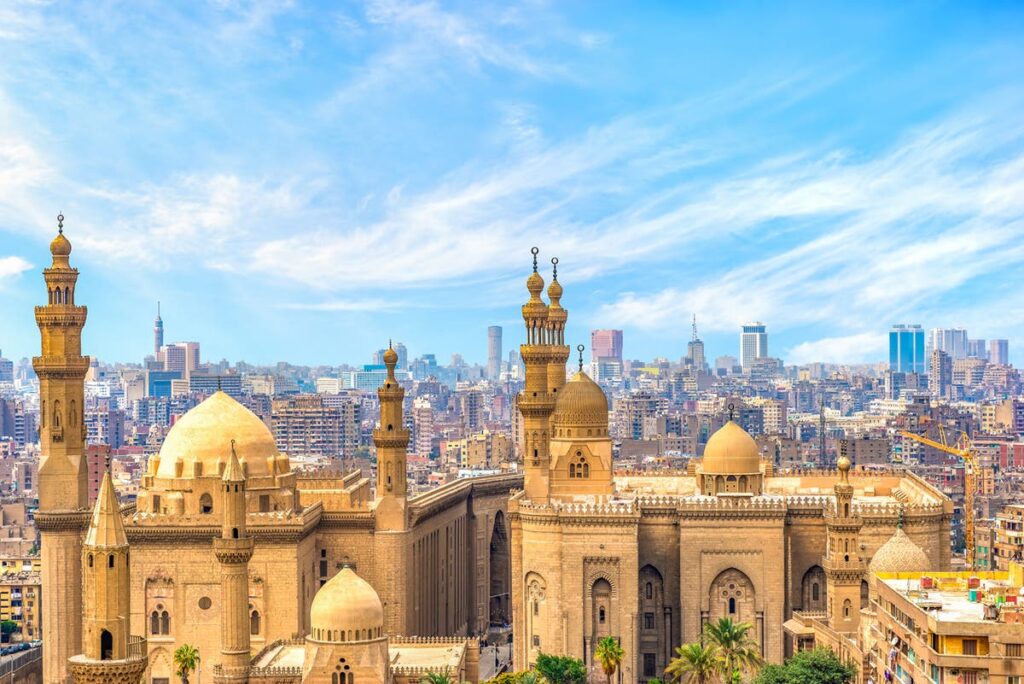After just 10 minutes in the company of the enigmatic seaweed expert Rie Ladefoged, I’m considering buying a pair of fishing waders. I’m waist deep in the swell and suck of The Kattegat sea off the Danish island of Læsø, armed with a plastic tub and some kitchen scissors, gathering seaweed.
“Ten years ago I went to a lecture on Japanese seaweed. The expert was talking about the best place in Denmark to harvest seaweed – and it was Læsø. I’m so lucky it was Læsø,” says Ladefoged.
This coastline is rocky, with shallow reefs that provide a high surface area for seaweed to grow, she says. It’s also a very salty sea, about 3% (further south the salt concentration is half that). “Seaweed thrives in saline environments, and the clean, cold water that flows from Norway,” says Ladefoged, who loves introducing people to the joys of the “seaweed safari”. Back on dry land, we toast bladderwrack over a campfire and sprinkle it with local salt. She serves us seaweed and coconut soup, and we try pickled bladderwrack, rhubarb and seaweed jam, sugar kelp pesto, and seaweed-infused beer.
The island of Læsø is just 14 miles (22km) long. Despite its small size and declining population, it’s a gastronomic haven famous for its langoustines, salt and, increasingly, its seaweed.
Læsø is easy to reach by public transport, with buses from Aalborg to the ferry port at Frederikshavn, from where it’s a 90-minute crossing. On the island, a free bus links the three main villages of Østerby, Byrum and Vesterø, with stops along the main road. Many people hire bikes and enjoy the quiet roads. There are no roundabouts or traffic lights, and the road rule is: “You have to wave at every car. People will worry you’re angry at them if you don’t,” Mette Thuesen, my host at Guest House Læsø, tells me.
The guest house is a new business working to bring more year-round visitors to Læsø. The island population swells in summer, thanks to an influx of mostly Danish holidaymakers who stay in summer houses. Guest House Læsø is a former youth hostel a five-minute walk from the ferry terminal. While the rooms have had a revamp, the space retains a relaxed communal atmosphere with a spacious internal courtyard perfect for small gatherings. Self-catering is possible, but the generous breakfast spread heaving with local produce is well worth paying a little extra for (though, to my shame, I didn’t brave the breakfast aquavit).
Læsø salt is found in top kitchens across Scandinavia and it’s a key industry on the island. Unusually, the salt is extracted from groundwater from the Rønnerne salt marsh. The first records of Læsø salt date back to 1150 when it was gifted to a king. Production ended in 1652, when the island ran out of trees for firewood to heat the water, and the process and traditions were forgotten. In 1991, a school project used archaeological discoveries to try out the ancient process, and it was such a success that the industry was revived.
The groundwater has 8-10% salinity, far higher than the sea, and the brown, salty water is rich in algae and minerals. It’s gently heated to separate the salt from the water, then cleaned and processed. The result is a delicious crunchy salt with a high mineral content that is highly regarded by chefs and locals. “When you taste Læsø salt, you taste Læsø’s soul,” salt-maker Flemming Larsen tells me.
At the saltworks, I meet Thomas W Olsen, a former mayor of Læsø and former mink farmer. The coronavirus pandemic ended the controversial mink industry here and Olsen now leads conservation tours of the Rønnerne salt marsh sanctuary on a converted tractor and trailer called the “Rønnerbus”. The Rønnerne spans 1,741 flat and boggy hectares (4,302 acres). Its scale is hard to comprehend – when the tide is out it’s almost impossible to see where the sea meets the land – but there’s little risk of getting stranded: at high tide the water is only 10cm to 20cm deep.
With Olsen, we identify and taste edible flowers and coastal herbs. He encourages us to crouch down to catch an ant with a blade of grass. “The yellow meadow ants taste of orange and lemon – they’re popular at Noma in Copenhagen,” he says. This may be the closest I get to a table at one of the world’s most famous – and expensive – restaurants, so I go with it, luring my unsuspecting prey up my makeshift chopsticks. I falter and the ant bites me first, which I think is fair enough.
Using all of the island’s wood for salt production in the 1600s had an additional consequence: the islanders ran out of building materials for their homes. This led to an innovation that, in conjunction with the salt industry, has inspired a bid for Unesco world heritage status: Læsø seaweed houses. While the men were away fishing for long weeks, the women on the island discovered that washed-up eel grass could be used as a thatch, creating durable, watertight roofing, some of which has lasted for more than 300 years.
At Læsø Museum, thatcher Henning Johansen explains: “You need a community to make a seaweed roof. The women worked together to gather, dry and weave the seagrass.”
Much of the wood for the walls of the houses came from shipwrecks. “Læsø was known as an octopus island,” says Tom Andersson from the tourist office. “There are low-lying reefs up to 12km out, which led to many shipwrecks. You’ll also see a lot of brown eyes from all the foreigners who ended up stranded here,” he jokes. “The men were used to finding a few more children when they came home after a long fishing voyage.”
It’s hoped that gaining Unesco status will help protect and preserve these unique homes, with their heavy fringed roofs, for future generations.
My final stop is Hummerens Hus, a popular seafood restaurant by the harbour. Læsø is famous for langoustines, which can be bought by the bucket at the harbour in late summer. The busiest day on the island is the first Saturday in August, when chefs from across Denmark come to compete for the “Golden Claw” at Jomfruhummerfestival, Læsø’s celebration of the langoustine. Today it’s a simpler affair: fresh langoustines, Læsø salt and seaweed butter. It’s Læsø on a plate.
Accommodation was provided by the Guest House Læsø, doubles from 950 krone (£105) a night. Return ferry from Frederikshavn to Læsø around £18, laesoe-line.dk
Premium IPTV Experience with line4k
Experience the ultimate entertainment with our premium IPTV service. Watch your favorite channels, movies, and sports events in stunning 4K quality. Enjoy seamless streaming with zero buffering and access to over 10,000+ channels worldwide.

















